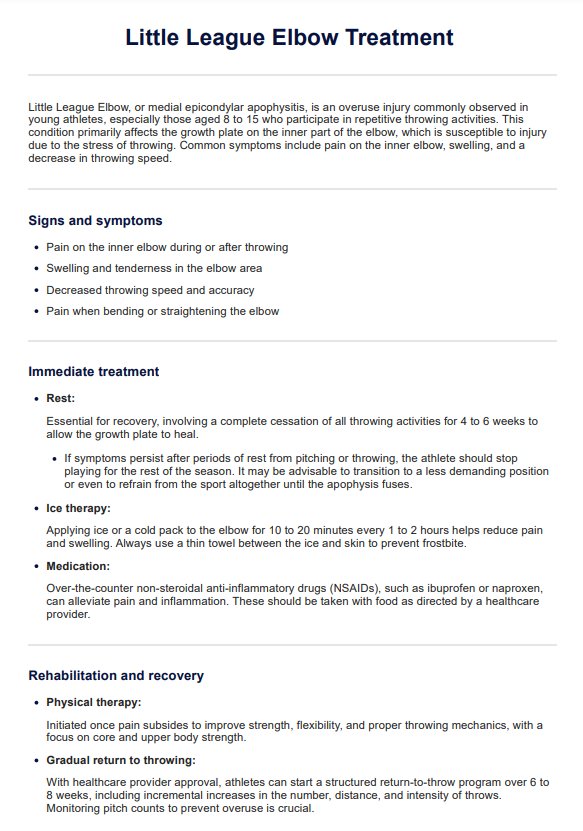Little League elbow primarily affects the growth plates on the inside of the elbow due to repetitive throwing motions, which are common in young baseball players. In contrast, a golfer's elbow involves inflammation of the tendons on the inside of the forearm, typically due to gripping or swinging activities.

Little League Elbow Treatment
Explore comprehensive guidelines for diagnosing and treating Little League Elbow, designed for healthcare professionals managing young athletes.
Use Template
Little League Elbow Treatment Template
Commonly asked questions
The duration of Little Leaguer's elbow varies; with proper rest, physical therapy, and a gradual return to throwing, most young athletes recover within 2 to 6 months, depending on the severity.
Yes, with appropriate treatment, including adequate rest, physical therapy, and modifications to throwing techniques, full recovery from Little League elbow is typically expected.
EHR and practice management software
Get started for free
*No credit card required
Free
$0/usd
Unlimited clients
Telehealth
1GB of storage
Client portal text
Automated billing and online payments











